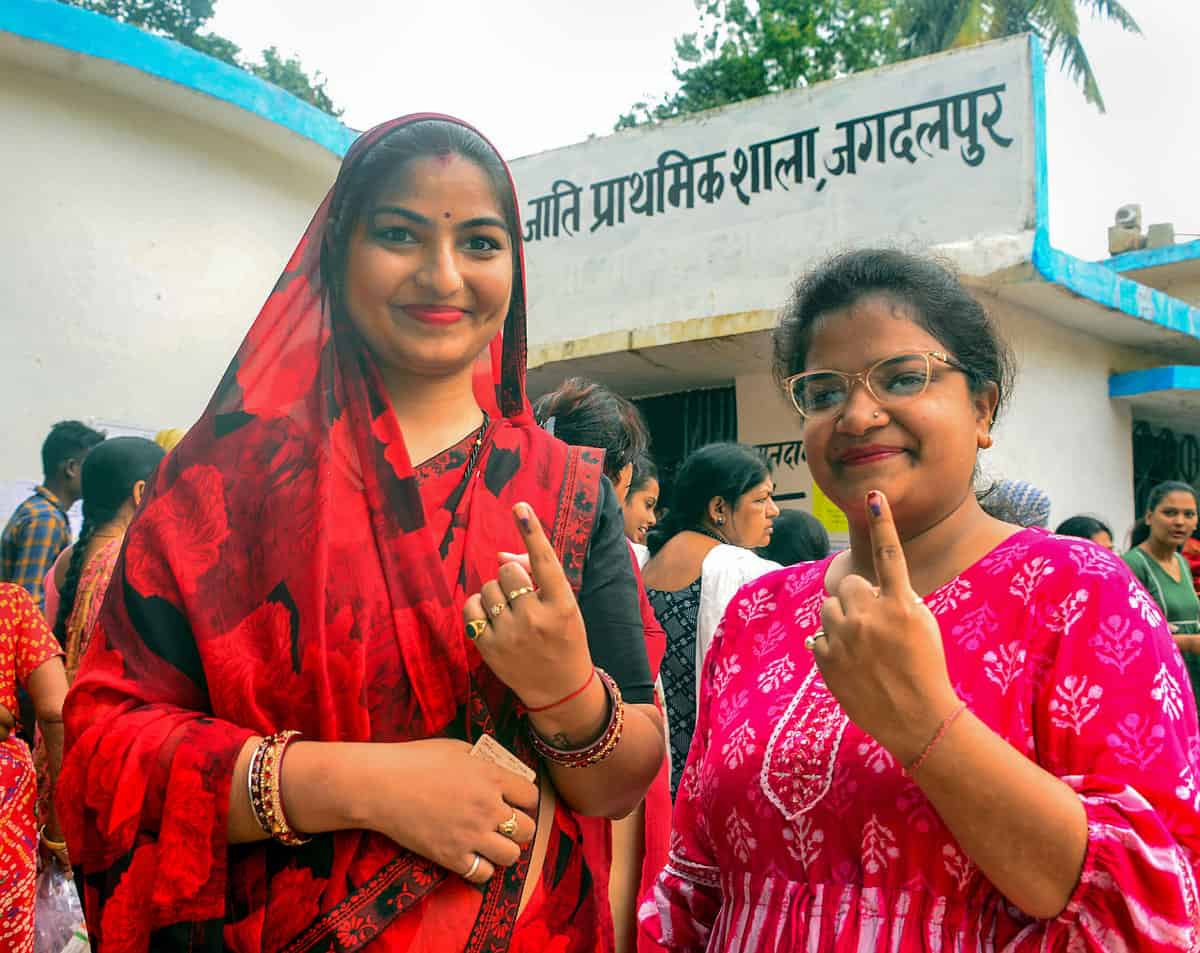
The high-voltage campaigning for the second phase of the 2024 Lok Sabha elections concluded on Wednesday evening, with top leaders of the BJP-led NDA and the opposition INDIA bloc making last-ditch efforts to woo voters.
The first phase of the Lok Sabha polls covered 102 seats across 21 states, with the Election Commission recording a voter turnout of around 62%.
The voting for the second phase of the Lok Sabha elections 2024 is scheduled for Friday, April 26, with the voting to commence at 7 am and conclude at 5 pm with an extra hour being provided as a buffer period for voters who are already present in the voting line
The end of second-phase campaigning marks the beginning of a 48-hour silence period before polling day, covering 89 constituencies across 12 states and Union Territories, including the remaining part of the outer Manipur Lok Sabha constituency.
According to the Election Commission of India, a total of 1206 candidates from 12 States and UTs, along with 4 candidates from the outer Manipur Parliamentary constituency, will contest in the second phase of the Lok Sabha Elections. The Election Commission reported that 2633 nominations were filed for the 89 parliamentary constituencies.
Lok Sabha constituencies going to polls on April 26
After scrutiny, 1428 nominations were found valid, with the last date for withdrawal of candidature being April 8.
Kerala leads with 500 nominations from 20 parliamentary constituencies, followed by Karnataka with 491 nominations from 14 seats. The minimum of 14 nominations were received from the parliamentary constituency in Tripura, while the 16-Nanded Parliamentary Constituency in Maharashtra received a maximum of 92 nominations.
The following constituencies will go to polls on Friday, April 26:
| States/UTs | No. of seats going to vote | Names of constituencies |
| Assam | 5 | Karimganj, Silchar, Mangaldoi, Nawgong, Kaliabor |
| Bihar | 5 | Kishanganj, Katihar, Purnia, Bhagalpur, Banka |
| Chhattisgarh | 3 | Rajnandgaon, Mahasamund, Kanker |
| Jammu & Kashmir | 1 | Jammu |
| Karnataka | 14 | Udupi Chikamagalur, Hassan, Dakshina Kannada, Chitradurga, Tumkur, Mandya, Mysore, Chamarajanagar, Bangalore Rural, Bangalore North, Bangalore Central, Bangalore South, Chikballapur, Kolar |
| Kerala | 20 | Kasaragod, Kannur, Vatakara, Wayanad, Kozhikode, Malappuram, Ponnani, Palakkad, Alathur, Thrissur, Chalakudy, Ernakulam, Idukki, Kottayam, Alappuzha, Mavelikkara, Pathanamthitta, Kollam, Attingal, Thiruvananthapuram |
| Madhya Pradesh | 7 | Tikamgarh, Damoh, Khajuraho, Satna, Rewa, Hoshangabad, Betul |
| Maharashtra | 8 | Buldhana, Akola, Amravati (SC), Wardha, Yavatmal-Washim, Hingoli, Nanded, Parbhani |
| Manipur | 1 | Outer Manipur |
| Rajasthan | 13 | Tonk-Sawai Madhopur, Ajmer, Pali, Jodhpur, Barmer, Jalore, Udaipur, Banswara, Chittorgarh, Rajsamand, Bhilwara, Kota, Jhalawar-Baran |
| Tripura | 1 | Tripura East |
| Uttar Pradesh | 8 | Amroha, Meerut, Baghpat, Ghaziabad, Gautam Budh Nagar, Aligarh, Mathura, Bulandshahr |
| West Bengal | 3 | Darjeeling, Raiganj, Balurghat |
As campaigning intensified, Prime Minister Narendra Modi launched the “Modi Ki Guarantee” campaign, focusing on youth development, women’s empowerment, and farmer and marginalised communities’ welfare. The Congress, on the other hand, emphasised its ‘Nyay’ guarantees, promising justice for various sections of society.
The BJP targeted the INDIA bloc over corruption and dynasty politics, while the Opposition criticised the government over electoral bonds, agency misuse, inflation, and unemployment. Key constituencies like Wayanad, where Congress leader Rahul Gandhi is contesting, and Thiruvananthapuram, where Congress leader Shashi Tharoor faces BJP’s Rajeev Chandrasekhar, will go to polls in the second phase.
(With inputs from agencies)



